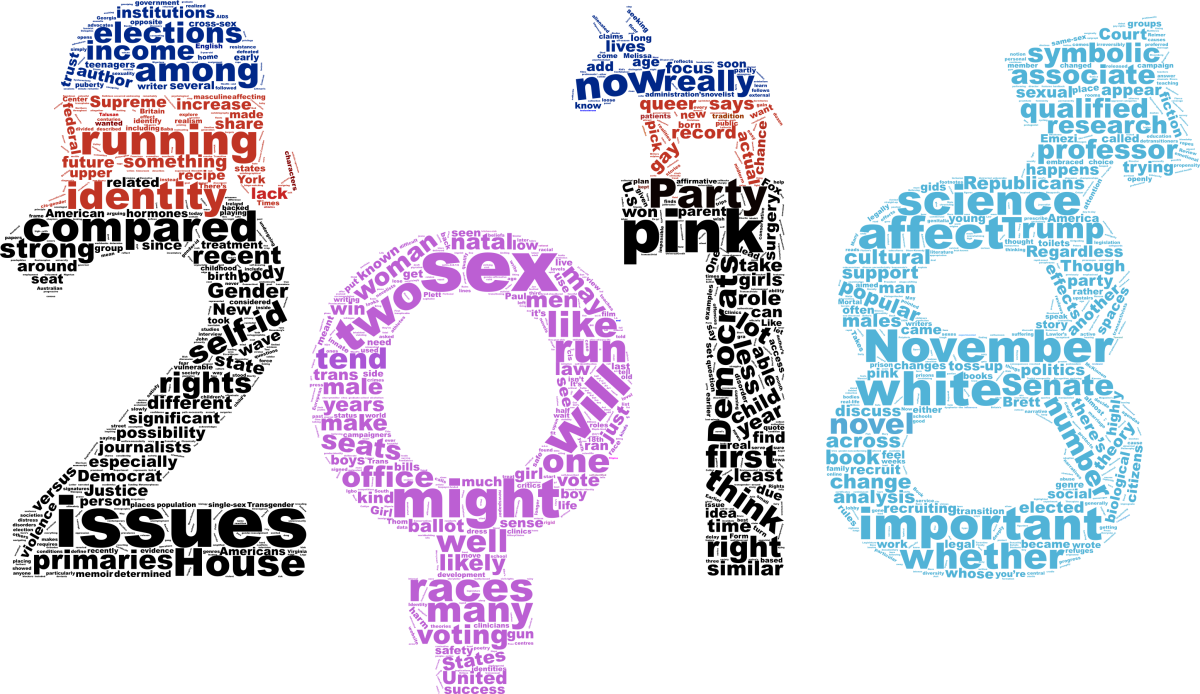This November, 257 women will be on the ballot in congressional races across the United States, with 235 for the U.S. House of Representatives and 22 for the Senate.
Some journalists have labeled this unprecedented number of women running for office the “pink wave.” The previous records were 167 female candidates for the House in 2016 and 18 for the Senate in 2012.
According to an analysis by the Brookings Institution, among the non-incumbents who ran in primaries, about 48 percent of female candidates won their primaries compared to approximately 23 percent of men. Additionally, women make up 23 percent of non-incumbents running for congressional seats in 2018 compared to 16 percent in the previous two congressional elections.
Associate professor of political science Sarah Fulton said the majority of female nominees are running as challengers.
“Historically, challengers have a low probability of winning because of incumbency advantage,” Fulton said. “The expectation is that maybe you might add — if there’s only a five percent chance of [challengers] winning — something like seven to eight seats they might pick up. I think there is a possibility that women might increase their seat share [in Congress].”
Fulton said recent developments such as the #MeToo campaign and controversies like the confirmation of Supreme Court Justice Brett Kavanaugh have played a role in mobilizing female political engagement in the country.
“I think the #MeToo movement has really encouraged [political activity] among women,” Fulton said. “There have been women’s marches, and they have been trying to recruit more women to run for office.”
One hundred eighty-three of these female candidates are Democrats, while 52 are Republicans. According to political science Ph.D. candidate Kostanca Dhima, this a reflection of a common perception that the Democratic party is more responsive to gender-related issues than the Republican party.
“The majority of African-American women, Latinas and college-educated women support the Democratic party,” Dhima said. “White women tend to vote Republican and about 90 percent of the women who voted for Trump were white. However, there appears to be an educational and income division, with middle and upper-income white women voting Democrat and low-income white women voting Republican.”
Though gender differences appear to affect the party affiliation of candidates, Dhima said female and male candidates are largely discussing similar issues with only some divergence between the two.
“Some of the most important issues discussed by both men and women are healthcare, gun rights, abortion and immigration,” Dhima said. “Though some argue that women tend to focus on domestic issues and men on international issues.”
Fulton cautioned against making predictions about results for female candidates. She said the popular sentiment about these candidates versus the actual structural factors can affect candidate viability.
“The problem is that a lot of the women they have recruited to run lack office-holding experience and are therefore less likely to do well,” Fulton said. “For women to do well in elections, they have to be at least as qualified, if not more qualified than their male competitor, and so recruiting kind of unqualified women to run in congressional races that are not winnable because of strong incumbents is not really a recipe for success.”
According to election forecasting data from FiveThirtyEight, if all the female nominees in races rated toss-up and above win, there will be about 120 women in the 116th Congress compared to 107 now. Dhima said the prominence of female candidates in future congressional business is highly dependent on what happens in November, but the symbolic significance of increased female representation is also important.
“Regardless of whether they are able to affect the congressional agenda or not, having a significant proportion of women elected could have strong symbolic and demonstrative effects,” Dhima said. “It could be especially important right now since research by [political science associate professor Diana] O’Brien and colleagues also demonstrates that having women involved improves citizens’ perceptions of the decision-making process and their trust in their political institutions.”
‘Pink wave’ washes over elections
November 5, 2018
Photo by Graphic by Nic Tan
235 women are running for seats in the U.S. House of Representatives and 22 are running for Senate seats.
Donate to The Battalion
Your donation will support the student journalists of Texas A&M University - College Station. Your contribution will allow us to purchase equipment and cover our annual website hosting costs.




















